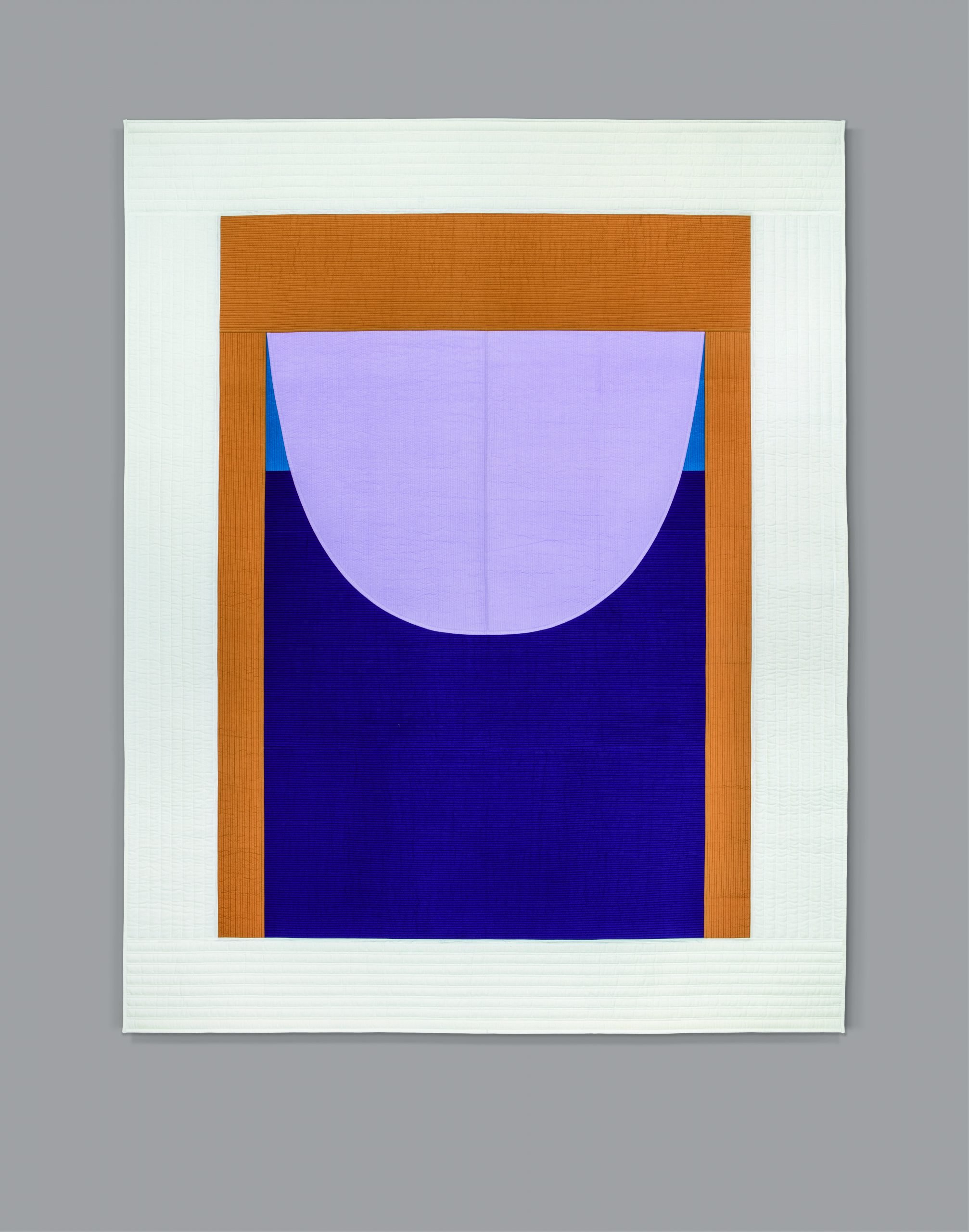U: Repair the cowshed after losing the cow = Too late
2018 - Textile (Textile)
195 x 155 x 1 cm
Seulgi Lee
The Korean title for U: Repair the cowshed after losing the cow = Too late is —a famous Korean proverb meaning “you are doing something when you are already late to do it”. This work by Seulgi Lee is a nubi (traditional Korean quilt) blanket project that shows Korean proverbs expressed as geometric shapes. Nubi blankets were used as single sheet summer blankets in Korean households until the 1980s. However, these blankets are now becoming obsolete as the Western way of bedding culture becomes more prevalent. Lee created her nubi blanket series in collaboration with Sung-yeon Cho, a Tongyeong nubi artisan with 30 years of hand stitching experience. Conveying the wit of Korean proverbs in her selection of colors and shapes, the geometric patchwork over the blankets can be also seen as a clever pictogram. Blankets have protective purposes, yet they also serve as bodies themselves; the fact that these are vessels that carry a sense of thinking makes Lee’s nubi blankets a type of shamanistic sculpture. Proverbs can be understood as sayings that reflect community spirit and thinking. The meaning of the titles of Lee’s nubi blankets, which draw from Korean proverbs, are summarized and conveyed in the five colors of obangsaek (traditional Korean color spectrum) based on yin and yang and the five elements, simple yet visually beautiful geometric forms, and nubi texture. Depending on the meaning of the proverb, nubi is applied in different directions on Jinju silk known for its excellent reflection of light. The resulting nubi blankets of Lee’s project revive past sounds and languages.
Seulgi Lee’s artistic references range from anthropological materials, archetypical linguistic elements, vernacular culture, handcrafts tradition, to the graphic culture of animistic belief found in diverse locals around the world. She has been collecting research materials, techniques, images, and language expressions relevant to these topics of her interest, their aesthetics, and folk culture, and interweaves them through boundless imagination. Her continued anthropological interest in the past and the present are expressed through her artistic practice that spans a range of media, such as wall drawing, sculpture, object, video, and sound, while she intensifies her artistic character found in wit and satire through geometrical configurations and lively colors. Lee has been expanding her world of art through collaborations with artisans that connect senses of the vernacular found in diverse local cultures and traditions with the essence of language. She especially enjoys using folk subjects and collaborating with master craft artisans, such as the dancheong, moonsal, and Tongyeong nubi blanket artisans and the association of traditional basket weavers in Mexico.
Colors:
Related artist(s) to: Seulgi Lee » Abdellah Karroum, » Adel Abdessemed, » Jean-Luc Moulène, » Lara Almarcegui, » Amos Gitai, » Annual Report, » Anri Sala, » Apinan Poshyananda, » Basim Magdy, » Caecilia Tripp

© » KADIST
Jean-Luc Moulène
2004It rains, Paris, 1st July 2000 , which could be the refrain of a song, is the title of a photograph of a minimal moment, the vision of a Parisian pedestrian, a cut flower lying on the pavement covered in rain drops...

© » KADIST
Jean-Luc Moulène
1997On a piece of paper, the artist has traced two loops in black crayon and placed two eyes where the lines intersect...

© » KADIST
Jean-Luc Moulène
2009Head Box by J ean-Luc Moulène i s not the representation of a space but a real space that remains in the domain of sculpture which the artist develops in parallel with his photographic practice...



